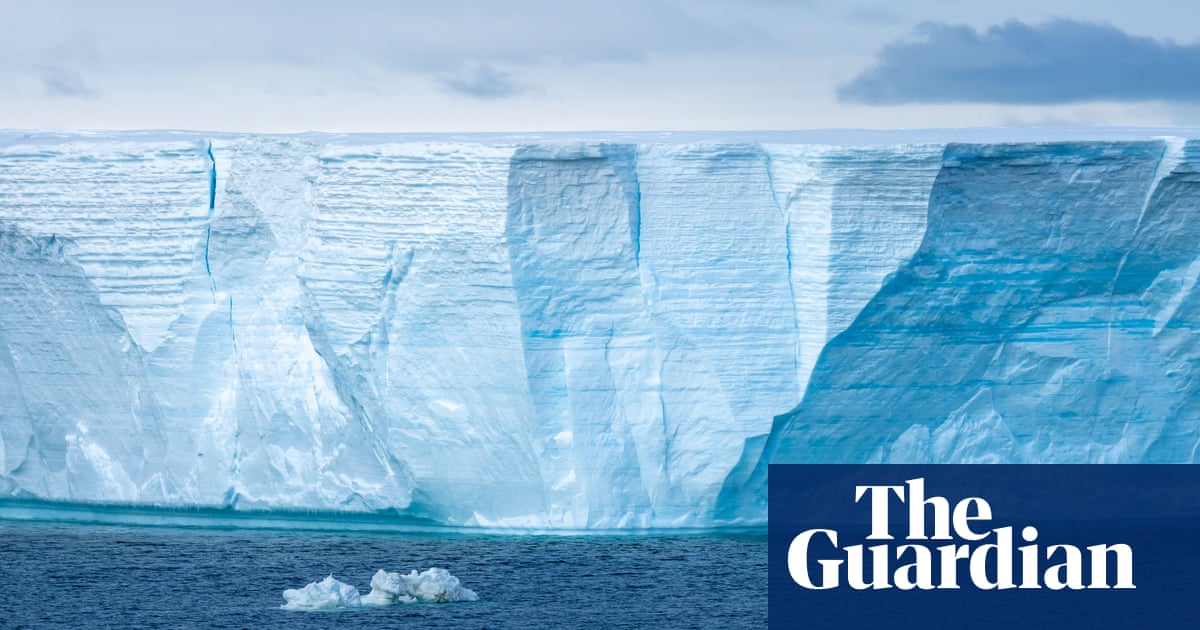Scientists analysing the cascading impacts of record low levels of Antarctic sea ice fear a loss of critical US government satellite data will make it harder to track therapid changes taking placeat both poles.
Researchers around the globe were told last week the US Department of Defence will stop processing and providing the data, used in studies on the state ofArcticand Antarctic sea ice, at the end of this month.
Tracking the state of sea ice is crucial for scientists to understand how global heating is affecting the planet.
Sea ice reflects the sun’s energy back out to space but, as long-term losses have been recorded, more of the planet’s ocean is exposed to the sun’s energy, causing more heating.
Sign up for Guardian Australia’s breaking news email
The National Snow and Ice Data Center, based at the University of Colorado,maintains a Sea Ice Index used around the world to track in near real-time the extent of sea ice around the globe.
In two updates in the past week,the centre said the US government’s Department of Defence, which owns the satellites that contain onboard instruments used to track sea ice, would stop “processing and delivering”the data on 31 July.
Climate scientists have been warning that Trump administration cuts have targeted climate functions across government, andthere has been fears the sea ice datacould be targeted.
The news comes as new research, some of which relied on the data, found thatrecord low amounts of sea ice around Antarctica in recent yearshad seen more icebergs splintering off the continent’s ice shelves in a process scientists warned could push up global sea levels faster than current modelling has predicted.
Dr Alex Fraser, a co-author of the research at the Australian Antarctic Program Partnership (AAPP), said NSIDC’s sea ice data was “our number one heart rate monitor” for the state of the planet’s ice.
“It’s our early warning system and tells us if the patient is about to flatline. We need this data and now [the scientific community] will be forced to put together a record from a different instrument. We won’t have that continued context that we have had previously.”
NSIDC has said it is working with alternative and higher-resolution instruments from a different satellite, but has warned that datamay not be directly comparable with the current instruments.
Fraser said: “We are seeing records now year on year inAntarctica, so from that perspective this could not have come at a worse time.”
The research, published in the journalPNAS Nexus, found a link between increasing numbers of icebergs calving from floating ice shelves and the loss of sea ice.
While the loss of sea ice does not directly raise sea levels, the research said it exposed more ice shelves to wave action, causing them to break apart and release icebergs faster.
Glaciologist Dr Sue Cook, also from AAPP, said “like a cork in a bottle” those shelves help to slow down the advance of land-based ice that does raise sea levels if it breaks off into the ocean.
She said the higher rates of iceberg calving seen in Antarctica were not accounted for in calculations of how quickly the ice sheet might break apart and contribute global sea levels.
“If we shift to this state where summer sea ice is very low but we continue using models based on previous periods, then we will definitely underestimate how quickly Antarctica will contribute to sea level rise,” she said.
The study also outlined other knock-on effects from the record low sea ice levels in the Antarctic, including the loss of more seals and penguins if trends continued.
As many as7,000 emperor penguin chicks died in late 2022after the early break-up of the stable ice they used for shelter while they grow their waterproof plumage.
Guardian Australia has requested comment from NSIDC and the US Department of Defence.
